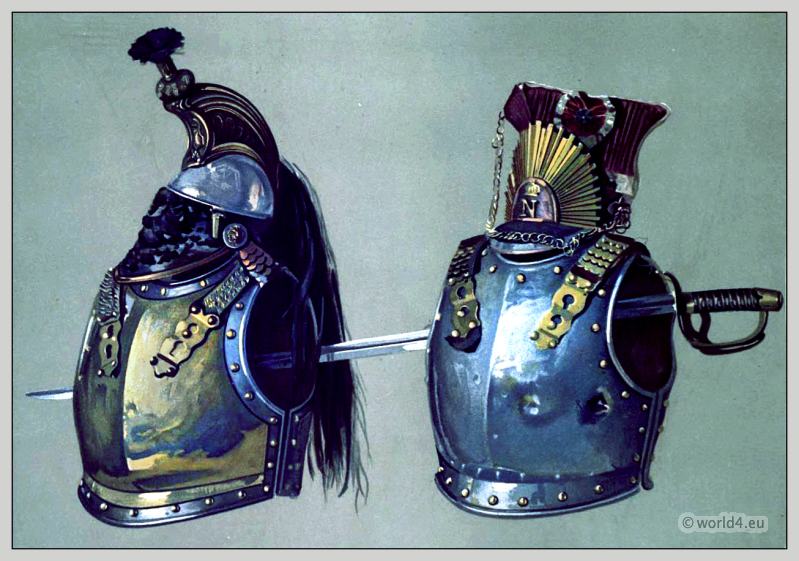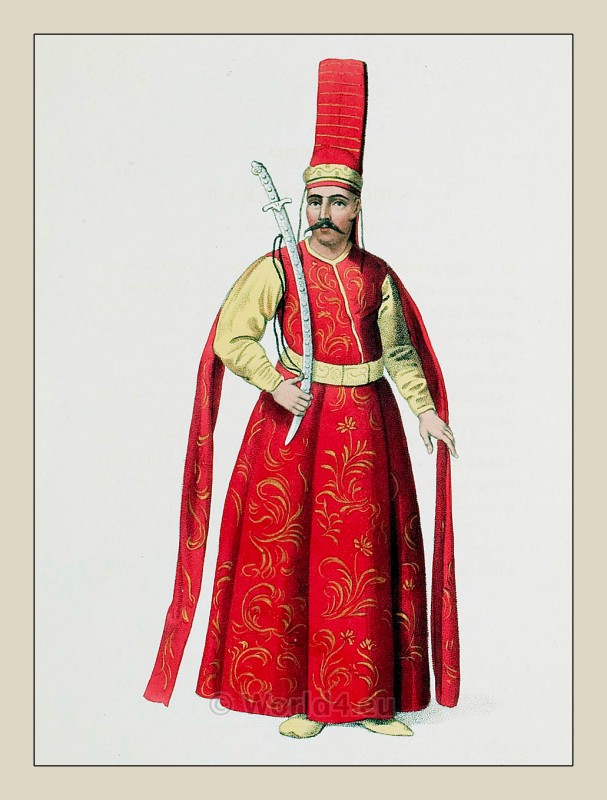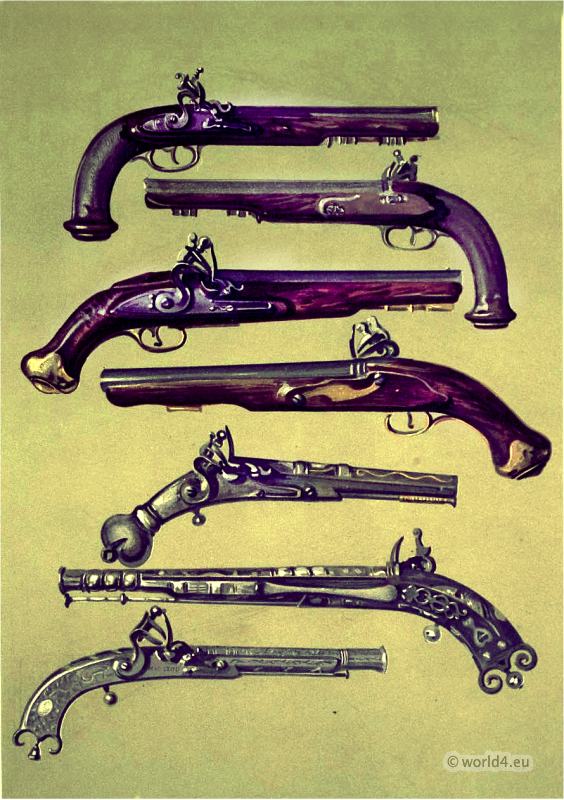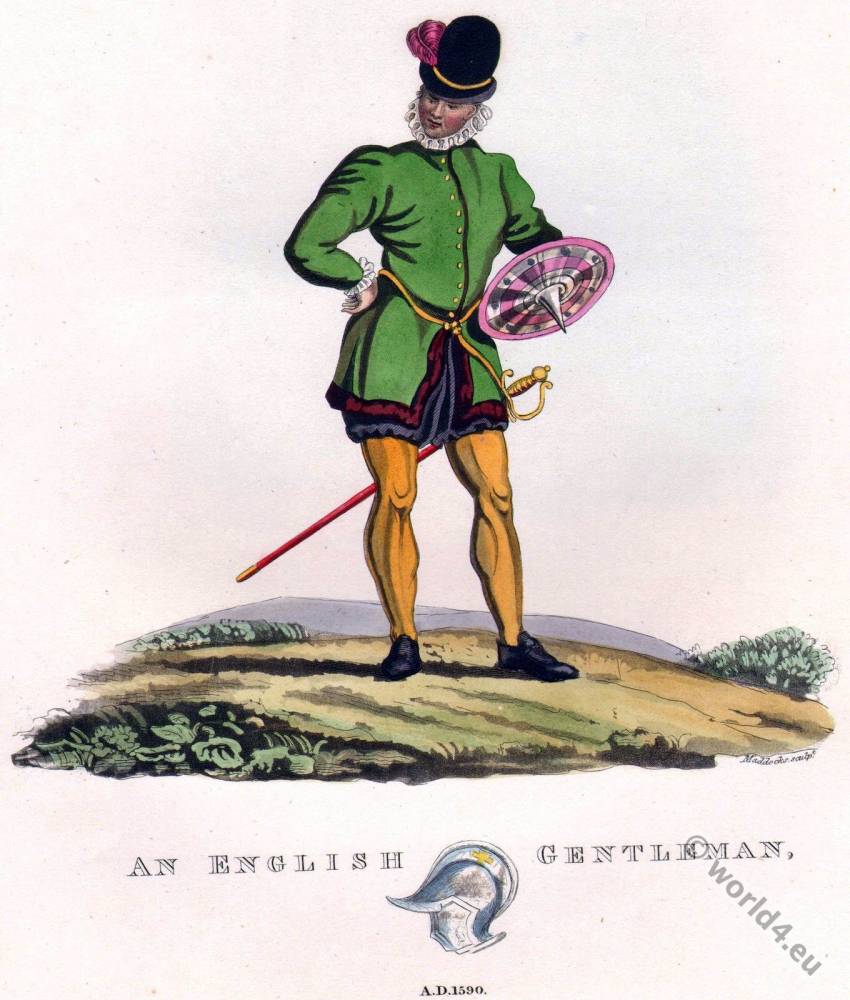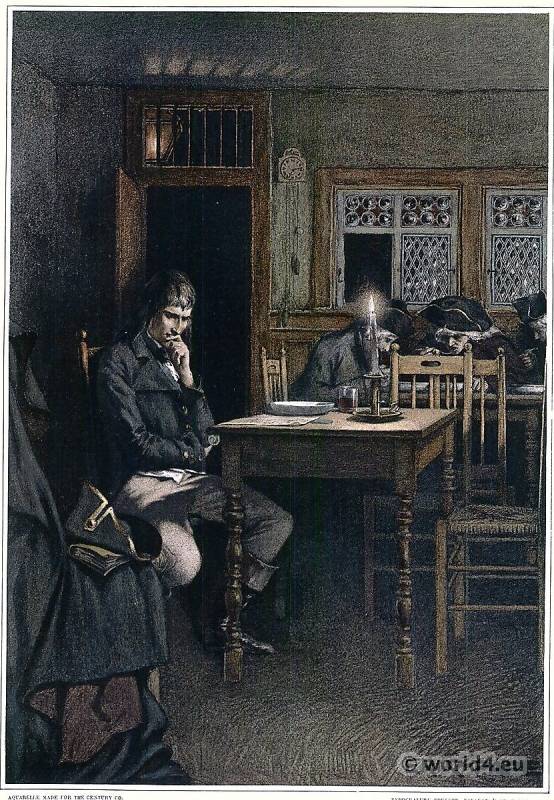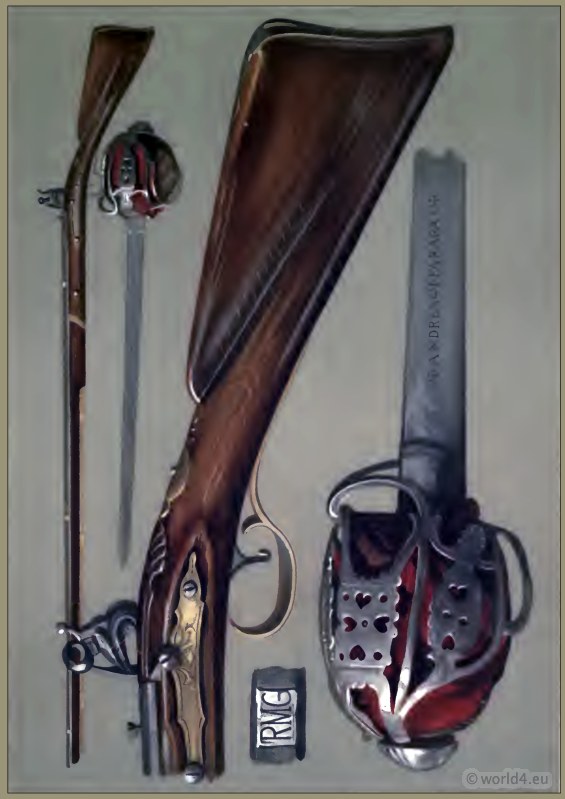Waterloo cuirasses and sword from the army of Emperor Napoleon I.
Waterloo cuirasses.
The Battle of Waterloo at Sunday, 18 June 1815.
“My steel-clad cuirasseers advance,
Each Hulan forward with his lance,
My guard my chosen, charge for France,
France and Napoleon.
Rushed on the ponderous cuirasseer,
The lancer couched his ruthless spear,
And hurrying as to havoc near
The cohorts’ eagles flew.”
(The Field of Waterloo. SIR W. SCOTT.)
THESE spoils from Napoleon’s army were secured by Sir Walter on the occasion of his visit to the field of Waterloo. In Major Pryse Gordon’s account of this visit he tells us that “when Sir Walter had examined every point of defence and attack, we adjourned to the ‘Original Duke of Wellington’ at Waterloo, to lunch after the fatigues of the ride. Here we had a crowded levee of peasants, and collected a great many trophies, from cuirasses down to buttons and bullets. We also find references to the cuirasses both in the Reliquia and in Paul’s Letters. In the former, Sir Walter, in describing the hall, says: “Before I quit the hall, I ought to say that the end on the west, or left side of the entrance, is garnished with spoils from the field of Waterloo, where I collected them in person, very shortly after that memorable action.
There are two or three cuirasses both of brass and steel. The cuirasses of the former metal are become very rare because they were at once knocked to pieces by the peasantry, who could sell the copper of which they were made at so much a pound. The belts, swords, and axes of the train are also come to anchor in this whimsical place.”
In Paul’s Letters Sir Walter enters into further details as follows: “The great object of ambition was to possess the armour of a cuirasseer, which at first might have been bought in great quantity, almost all the wearers having fallen in that bloody battle the victors have indeed carried off some of these cuirasses, to serve as culinary vessels, and I myself have seen the Highlanders frying their rations of beef or mutton upon the breast-plates and back-pieces of their discomfited adversaries. But enough remained to make the fortunes of the people of St. John, Waterloo, Planchenoit, etc.
When I was at La Belle Alliance I bought the cuirass of a common soldier for about 6 francs, but a very handsome inlaid one, once the property of a French officer of distinction, which was for sale in Brussels, cost me four times that sum. As for the casques, or head-pieces, which by the way are remarkably handsome, they are almost introuvable. For the peasants almost immediately sold them to be beat out for old copper; and the purchaser, needlessly afraid of their being reclaimed, destroyed them as fast as possible.
“The steel cuirass measures 3 feet 2 inches round the waist, and 3 feet 6 1/2 inches round the chest. The brass cuirass is 3 feet 3 1/2 inches round waist, 3 feet 6 3/4 inches round chest. The sword-blade measures 38 inches in length, the breadth at hilt 1 1/2 inch, and the hilt itself 6 3/4 inches. The grip is covered with black leather bound with brass wire. The guard is formed of flat brass bands. The helmet measures 16 inches in height, and 8 inches from back to front. The upper half of the helmet is of bright steel, with the crest in brass, and is highly ornamented at the side with foliage and fluting. The horse-hair plume is about 2 feet in length.
Source: Abbotsford; the personal relics and antiquarian treasures of Sir Walter Scott. Illustrated by William Gibb. By Maxwell-Scott, Mary Monica. London A. and C. Black 1893.
[wpucv_list id=”136569″ title=”Classic grid with thumbs 4″]Related
Discover more from World4 Costume Culture History
Subscribe to get the latest posts sent to your email.

